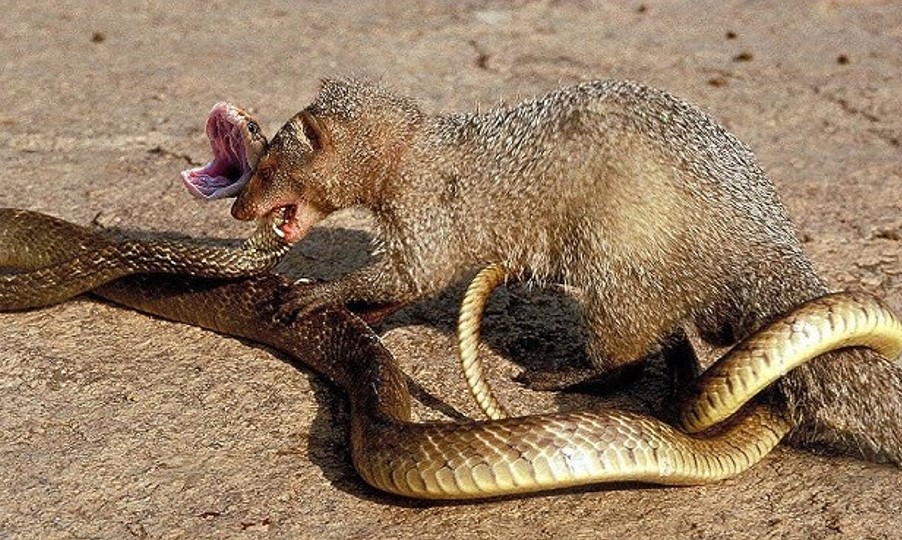In the wild, few battles capture the imagination and intrigue of wildlife enthusiasts quite like the hypothetical showdown between two apex predators: the lion and the tiger. With their majestic presence, fearsome power, and ferocious hunting prowess, these big cats reign supreme as the undisputed kings of their respective domains. But when it comes to a head-to-head confrontation, who would emerge victorious in a battle between these titans of the animal kingdom? To unravel this age-old mystery, we must delve into the intricacies of their anatomy, behavior, and evolutionary adaptations.

At first glance, the lion appears to have the advantage in sheer brute strength and size. With its muscular build, robust frame, and impressive mane, the male lion cuts an imposing figure on the African savannah. Armed with razor-sharp claws and formidable jaws capable of delivering bone-crushing bites, the lion is a formidable hunter and defender of its pride. In combat, the lion relies on its sheer power and aggression to overwhelm opponents, using its weight and momentum to deliver devastating blows.
On the other hand, the tiger possesses a sleeker, more streamlined physique, optimized for stealth and agility. With its striped coat and stealthy movements, the tiger is a master of camouflage and ambush, stalking its prey with unparalleled precision. While not as physically imposing as the lion, the tiger compensates with its lightning-fast reflexes, cat-like agility, and lethal claws and teeth. In a fight, the tiger relies on its speed, agility, and cunning to outmaneuver opponents, striking with deadly precision to deliver fatal blows.

When it comes to weaponry, both the lion and the tiger are well-equipped to inflict serious damage on their adversaries. The lion’s claws, while not as long or sharp as those of the tiger, are still formidable weapons capable of slashing through flesh and bone with ease. Likewise, the lion’s powerful jaws, equipped with long, sharp canines, can deliver devastating bites that can incapacitate or even kill prey in a single blow. In contrast, the tiger’s claws are longer and sharper, ideal for gripping and disemboweling prey, while its powerful jaws are capable of delivering a lethal bite force that can crush bones and rupture vital organs.
In terms of temperament and fighting style, the lion and the tiger exhibit distinct behaviors shaped by their respective evolutionary histories and social structures. Lions are highly social animals, living in prides consisting of multiple females, their offspring, and a dominant male. As such, lions have evolved to cooperate and coordinate their hunting efforts, relying on teamwork and communication to bring down large prey. In combat, lions often engage in fierce displays of dominance and aggression, roaring and posturing to intimidate rivals and assert their dominance.

In contrast, tigers are solitary creatures, preferring to roam and hunt alone in their vast territories. With no need for social interactions or alliances, tigers have evolved to rely on their own skills and instincts to survive and thrive in the wild. In combat, tigers are known for their stealthy ambushes and lightning-fast attacks, using their agility and speed to outmaneuver opponents and deliver lethal strikes from unexpected angles. While tigers may lack the social cohesion and teamwork of lions, they make up for it with their fierce independence and solitary prowess.
When considering a hypothetical confrontation between a lion and a tiger, it’s essential to factor in the context and circumstances of the encounter. In the wild, lions and tigers inhabit different continents and ecosystems, with lions found primarily in Africa and tigers in Asia. As such, direct confrontations between these two species are exceedingly rare in nature, making it difficult to draw definitive conclusions about the outcome of a hypothetical fight.

That being said, there have been documented cases of lions and tigers clashing in captivity, often as a result of human intervention or mismanagement. In these rare instances, the outcomes have varied widely, with some fights resulting in injuries or fatalities for one or both animals, while others have ended inconclusively or with one animal retreating. Factors such as age, size, temperament, and health can all influence the outcome of a confrontation, making it difficult to predict with certainty which animal would emerge victorious in a hypothetical fight.
In conclusion, the question of who would win in a fight between a lion and a tiger is a complex and multifaceted one, with no easy answers. Both animals possess formidable weapons, impressive physical abilities, and unique behavioral traits that make them formidable predators in their own right. While the lion may have the advantage in sheer size and strength, the tiger compensates with its speed, agility, and cunning. Ultimately, the outcome of a hypothetical confrontation between these two apex predators would likely depend on a myriad of factors, including the individuals involved, the circumstances of the encounter, and the element of chance.


